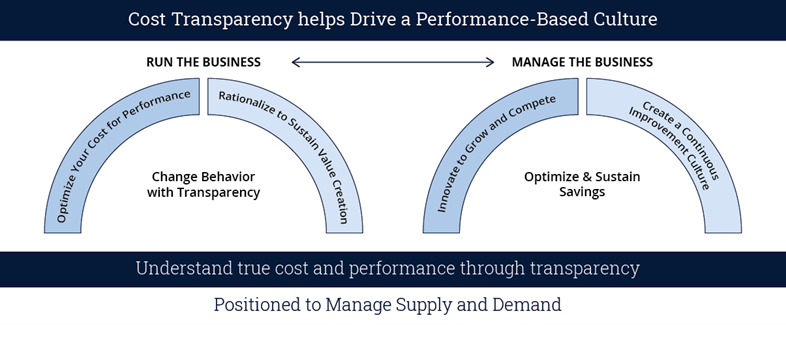In today’s economy, cost optimization is key to effective financial management. And to truly optimize costs, organizations must first get a clear understanding of their current cost structure, areas of inefficiency and how to best handle showback and chargeback costs.
This is where AI comes in. New AI tools can help an organization not only gain insight into its spending patterns and cost drivers – it can help break down costs into a degree of granularity that reveals the multitude of factors contributing to the expenses. The goal of all of this is better decision-making.
6 Benefits of AI-driven Cost Transparency
- Identify cost drivers: By tracking costs at a detailed level, organizations can identify the key drivers of expenses, which allows them to prioritize cost reduction efforts and focus on areas that have the most significant impact.
- Eliminate waste: Cost transparency allows organizations to identify wasteful spending, inefficiencies and redundant activities so they can eliminate or streamline processes resulting in cost savings.
- Facilitate informed decision-making: With clear visibility into costs, organizations can make data-driven decisions, evaluate the financial impact of various options and choose the most cost-effective alternative(s).
- Optimize pricing: AI allows you to dynamically adjust prices based on market demand and customer behavior.
- Predict customer churn: Identifying customers at risk of leaving helps organizations proactively implement retention measures.
- Forecast demand: Predicting future demand will optimize current production and inventory management.
How to Implement AI into Your Cost Transparency Efforts
How to get started?
The first step is to standardize cost categories. This requires establishing a standardized framework, including nomenclature, for categorizing costs across the organization. This kind of consistency and comparability are key to finding greater insights into the expenses in your data lake.
Then, implement robust cost accounting systems that capture and track costs accurately. These systems should integrate with various business functions and provide real-time cost information where possible. Assigning cost ownership to departments, teams or individuals will ensure accountability and encourage cost-conscious behavior.
It’s important to deploy AI tools and systems that track and report costs at a granular level. This includes capturing all the related cost components – direct, indirect and overheads – associated with specific activities or projects for the total cost of ownership.
AI-driven cost optimization not only analyzes initial costs for transparency, it also analyzes ongoing costs to help organizations find the most cost-effective solutions for sustained savings and regularly monitor cost metrics to identify areas for further optimization.

How to Start a Cost-Transparency Initiative
We believe managing costs at the speed of digital requires a shift in thinking, which is beyond traditional optimization approaches. ISG helps organizations develop cost transparency initiatives to build a performance-based culture geared toward changing internal behaviors. By better managing the finances of the business, you can optimize and sustain savings to better manage the business for growth.
Contact us to get started.
